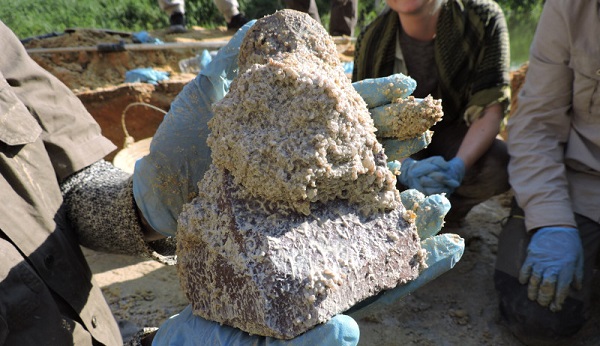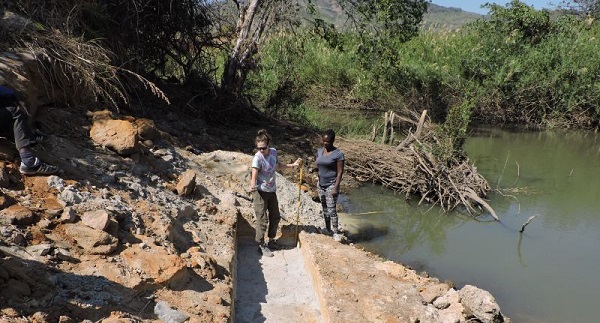
Larry Barham, Professor of African Archaeology at the University of Liverpool, is Principal Investigator of the AHRC-funded Deep Roots research project, which seeks to gain a greater understanding into the origins of human technology by excavating areas of interest in Zambia. Read an excerpt from his blog following an excavation that took place in the summer, and watch as an Early Stone Age artefact is uncovered at the site of Kalambo Falls.
Back at camp the morning briefing blends despair with optimism. Trench 3 may need to be closed by the end of the day – no artefacts. But Trench 1 is well-placed to deliver the Early Stone Age based on comparisons with Clark’s 1956 section plan (of old Site B round the bend). He shows fine pale sands overlying a spread of Acheulean tools (handaxes, cleavers and more). We’re finding the sands. Keep digging – nirvana is in reach.
That’s the brief – and how wrong it is.
As if by magic – and contrary to expectations – artefacts appear in Trench 3 from the start of the day. More than a hundred by the end of play.
The first of two impromptu dances takes place at 9:30am. A large, well-made tool emerges in a corner, a cleaver edge on a handaxe. Bliss! Hands and hips gyrate in an awkward dad-dance. The first of the day.
Throughout the day small flakes and shaped tools are recorded, collected carefully to avoid contamination from hands and environment, and double-bagged. Noora Taipale from the TraceoLab, University of Liège, will be arriving shortly to examine them for any adhering residues. Vital clues to their uses.
Dance number two takes place in the heat of the afternoon. A monster – no other word will do – dark red quartzite core-axe emerges slowly from the sands. Priscilla, the finder, is ecstatic. This beast of a tool barely fits our largest bag and is now safely wrapped and waiting analysis.
The dance? Just sheer, unscripted, dorky joy.

Dance three follows the next day. Another find by Priscilla, this time the jig is joined by others. It’s infectious and now has a name: the Clarissa Cleaver dance, named in honour of the absent Clarissa who’s back at base feeling (temporarily) under the weather.
As for the hard-working Trench 1 team, promised so much, well, they say goodbye to their never-ending pit of fine pale sand. Health and safety brings this quest to a close. The depth is now more than a metre below the river, an accident waiting to happen. With only a few small flakes found at the base in a gravel lens.
Stepping back, Trench 1 gives us a full 8 metre section through the cliff face. Our control sequence for dating and environmental sampling. And the crew are now in Trench 5, digging fine pale sand.
Just keep digging, great things are in store. Wry looks.
And guess what? A double dance for trench 5 with two cleavers found in close succession. We’re back on track for a successful season.
This post is an excerpt from the blog ‘A Two-Dance Day’ on the Deep Roots Africa project website.
Discover more
Study in the Department of Archaeology, Classics and Egyptology at the University of Liverpool